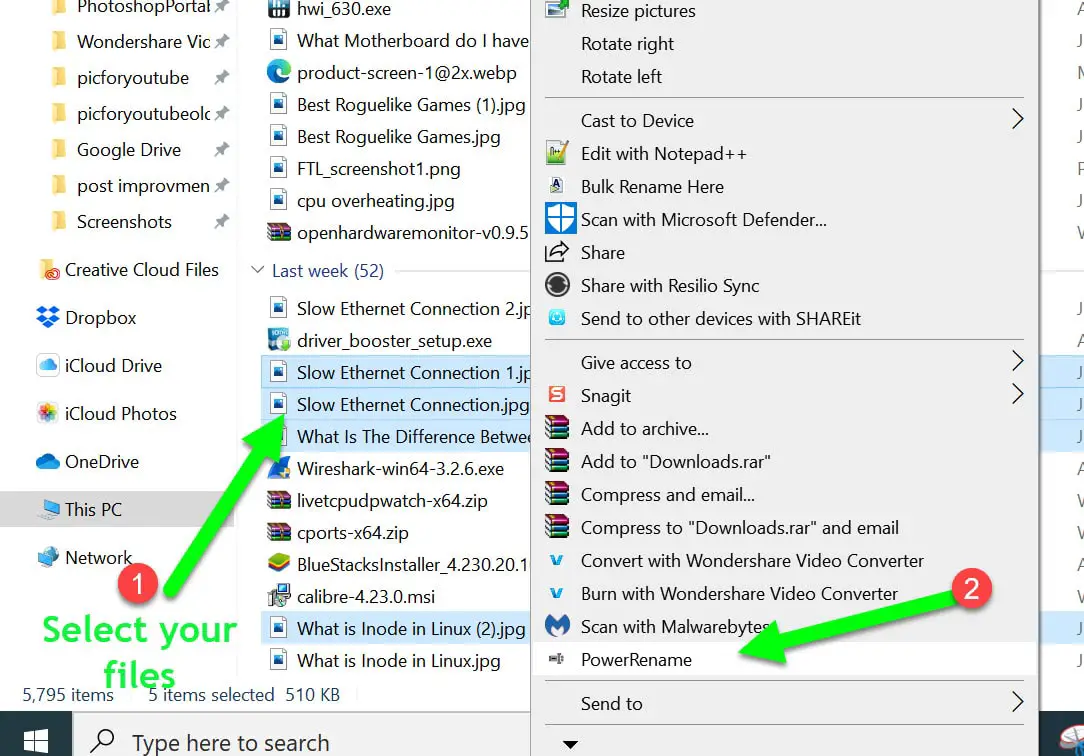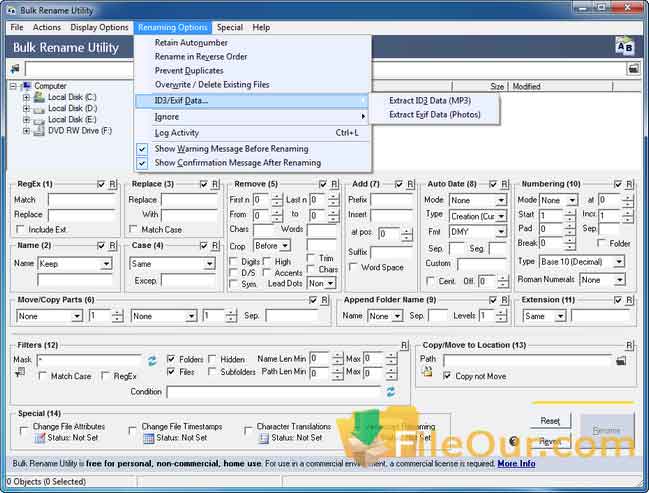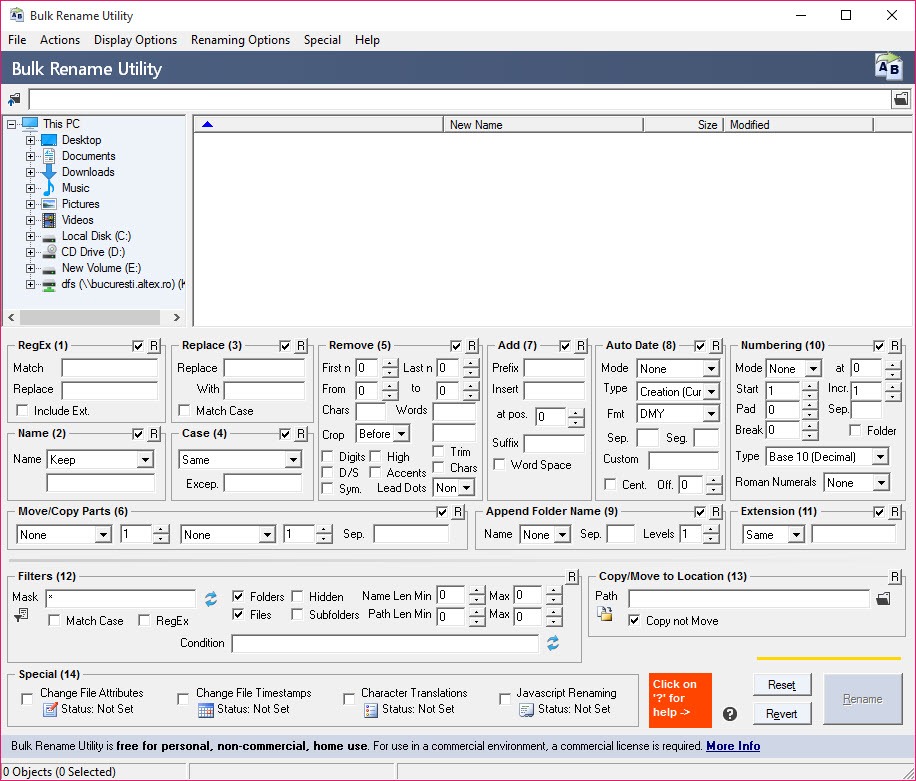


If you don’t know the language, leave this section alone. RegEx (1): A find-and-replace tool that uses a complex computer language called Regular Expressions.Right Navigation Pane (B): A detailed list-style view of the files and folders inside of whatever’s selected in the Left Navigation Pane.


The advantage of the program is that you can still see the column that displays its new name next to each file, so we can monitor the effects of our settings on an ongoing basis even before the process of renaming. After selecting the files, set the fields at the bottom of the interface, i.e. All you need to do is select a folder from the directory tree, and then select the items on the list of files, the names of which you want to modify (ctrl + left mouse button or shift + left mouse button). mass deleting the third letter from the end of each name).Īfter familiarizing yourself with the individual functions, it turns out that working with the program is very simple. First of all, it offers as many as 13 different functions for renaming files, such as inserting fragments into a specific place, automatic file numbering or cutting letters from any place in the name (e.g. But it only takes a few moments to get used to the individual elements of the program's interface. The program allows you to perform both simple operations that will change the entire file names, and more advanced ones, with which we can query specific fragments of names or add new elements, such as numbering and suffixes or prefixes.īulk Rename Utility is easy to use, though can seem a little overwhelming at first glance. Bulk Rename Utility is a small tool with which we can rename many files at once.


 0 kommentar(er)
0 kommentar(er)
